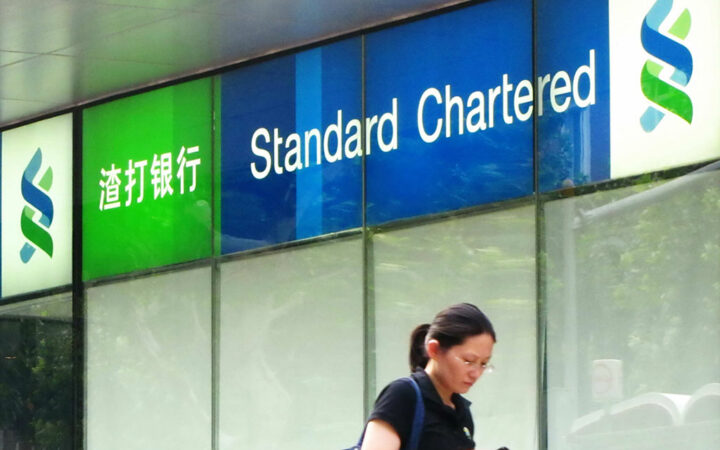
Please check out latest news, expert comments and industry insights from Coinspeaker's contributors.
With the US set to reclaim its rightful place at the forefront of DeFi innovation, there is a growing sense of optimism that many of these solutions will come to fruition, finally putting DeFi within reach of the masses.
 Edited by Julia Sakovich
Updated
8 mins read
Edited by Julia Sakovich
Updated
8 mins read

The decentralized finance industry is still in its infancy and something of a niche market, even in crypto circles, yet it holds immense potential for mainstream adoption. It can be achieved by integrating DeFi with traditional finance, or TradFi, in order to create a truly global, decentralized, and borderless economy in which everyone can participate, but there’s a lot of work to be done if the industry is going to make it happen.
TradFi has long been plagued by numerous problems, with its inefficiency, poor accessibility, a lack of competitive lending rates, low interest on savings, and high fees just some of the problems. By integrating TradFi with DeFi, there are opportunities to eradicate these shortcomings, enabling everyone – including the unbanked and underbanked – to access more competitive and efficient financial services and improve their economic standing.
Few will disagree that these goals are not worth pursuing, but some challenges must be overcome. DeFi has long faltered in terms of security, trust, and user-friendliness, and there is an urgent need for the industry to find a solution to these issues, otherwise, it could miss out on what looks to be a golden opportunity to make the world a better place.
One of the major problems DeFi faces is security. The decentralized nature of blockchain protocols makes them attractive targets for hackers and other malicious actors, who are constantly looking to exploit vulnerabilities in their smart contracts. While some progress has been made, DeFi platforms lost more than $171.3 million through 62 reported hacks in the second quarter of 2024 alone, illustrating that they remain a major target for attackers.
These incidents don’t just cause inconvenience for users. They can be life-changing events if someone were to lose their entire savings due to such a hack. All the more so because there are few, if any, comebacks for victims in the decentralized world.
Another major hurdle for DeFi is the complex user interface associated with most protocols, which inhibits adoption. With many DeFi dApps, users must have a deep understanding of crypto, blockchain, and trading terminology and methods to interact with them. It creates a high technical barrier that dissuades those who lack such knowledge from participating.
Unfortunately, the above problems are just the tip of the iceberg, for DeFi must also overcome a number of more complex challenges if it’s to prevail.
In a blog post, the hybrid financial marketplace GRVT notes that one of the major ones stems from the absence of clear regulatory frameworks, which creates too much ambiguity and limits the involvement of institutions. The lack of regulation also means there are few if any, protections for consumers. The industry has struggled with this due to the need to integrate compliance while preserving decentralization.
Other problems identified by GRVT include the lack of scalability and cross-chain interoperability, with many of the best-known blockchains, like Ethereum, struggling with network congestion due to their low throughput. While Layer-2 networks and cross-chain bridges have emerged as potential solutions, the user experience remains complex and there’s a need for more seamless interactions for users.
Liquidity fragmentation is the direct result of the lack of cross-chain interoperability. Because liquidity is scattered across hundreds of different blockchains and protocols, capital efficiency becomes problematic. There’s also a lack of enterprise-grade tools for risk management and compliance reporting, which also dissuades TradFi institutions from participating in DeFi, despite them showing a lot of interest.
With Donald Trump’s return to the White House, the US government is expected to do a sharp U-turn and positively embrace the crypto industry after years of opposition and crackdowns. His Presidency could be the catalyst the DeFi industry has been waiting for, with an opportunity to finally work with government regulators and agencies to try and overcome the obstacles preventing mainstream adoption.
Trump is set to become the most crypto-friendly president the US has ever had, having made no less than 11 promises to the community during his campaign. Among other things, the President-elect has pledged to get rid of SEC Chairman Gary Gensler, who is widely perceived as anti-crypto on his first day in office. He has also promised to create a “national stockpile” of Bitcoin, eliminate capital gains taxes on BTC, support the U.S. Bitcoin mining industry, end regulatory crackdowns, and create an advisory council to investigate ways crypto can boost the U.S. economy.
According to Trump, his ultimate goal is to make the US the “crypto capital of the world” and protect individuals’ rights to self-custody of digital assets.
One of the most intriguing possibilities for DeFi is the idea of it being more tightly integrated with TradFi as a solution to the quandaries that have so far prevented mainstream adoption.
This concept, known as CeDeFi, intends to merge DeFi’s innovation with the practicality and security offered by TradFi, creating a kind of hybrid financial system, where certain aspects may be centralized and others decentralized. CeDeFi can be thought of as a bridge between the two competing financial systems, giving users the benefits of both. If done right, CeDeFi could achieve greater scalability, faster transaction processing, enhanced security, and a simplified user experience, while still providing all of the opportunities that can only exist with DeFi.
The nature of CeDeFi calls for much closer cooperation and collaboration between the DeFi and TradFi industries, but both parties stand to benefit. TradFi institutions will be able to tap into the unique capabilities of DeFi, such as its efficiency, transparency, and accessibility, while DeFi protocols can gain more security and trust, build better user experiences, and access the enormous user base of TradFi. By collaborating, DeFi and TradFi can build a better, more efficient, and inclusive financial system that benefits everyone, from the largest banks down to unbanked individuals in the world’s least developed economies.
What’s truly exciting is that a lot of progress has already been made in terms of CeDeFi. For instance, GRVT has ambitions to unite DeFi with TradFi and become a kind of “Amazon” for finance that spearheads an entirely new global financial system.
Lofty goals, perhaps, but it has outlined more than a few silver bullets that might make it happen. To address the challenge of trust, which is a problem for traditional, centralized crypto exchanges, GRVT has created a blockchain-based settlement and margin management system. With this, users can always retain control of their digital assets, so there’s no need to trust any third parties.
In addition, GRVT SecureKey is an innovative crypto wallet that solves the headaches associated with private key management, improving accessibility to DeFi. The need to manage private keys, writing them down on paper and storing them somewhere safe, is one of the biggest dilemmas faced by crypto holders, who risk losing access to their crypto funds forever if they happen to misplace them. By relying on novel account abstraction techniques to replace the seed phrase with a more familiar password, SecureKey eliminates such hassles with an email-based recovery system.
Another tantalizing possibility for DeFi is the concept of tokenized real-world assets. RWAs, as they’re known, are traditional assets and financial primitives that live on the blockchain, where they can be used as collateral in DeFi protocols.
Examples of RWAs include cash, precious metals like gold and silver, corporate debt, real estate, insurance, employee’s salaries, invoices, consumer goods, luxury art, bottles of vintage wine, royalties, credit notes, and more. Basically, any kind of asset with tangible value can be tokenized and brought on-chain.
Tokenization protocols are already well established. Goldfinch acts as a bridge between DeFi and emerging markets, enabling small businesses to access crypto loans by using their traditional assets as collateral. For instance, a supplier of agricultural machinery that needs a quick cash boost could tokenize outstanding invoices to customers and use these to secure a crypto loan.
Centrifuge offers a similar capability, with its tokenization platform Tinlake bringing liquidity to illiquid assets ranging from debts to bonds and real estate, serving borrowers and lenders alike. Then there’s Maple Finance, which has innovated further to provide uncollateralized lending, making credit accessible to those who don’t have collateral.
RWA protocols provide users with the opportunity to access credit that’s hard to come by via traditional channels, as well as the possibility of a more stable and predictable source of yield for those who deposit funds into their liquidity pools. RWAs are much less volatile than traditional crypto too, which can attract more cautious investors looking for stable returns.
In addition, RWAs in DeFi create more opportunities for financial inclusion, catering to businesses and individuals that lack access to traditional banking. By giving the unbanked and underbanked access to financial services, it can promote economic growth and development.
By making DeFi more accessible, individuals across the world will have the opportunity to boost their financial standing in ways that simply aren’t possible with TradFi. For instance, stablecoin yield provides a reliable way for depositors to earn stable interest, while DeFi loans provide fast access to liquidity without the bureaucratic constraints of traditional banks.
DeFi still has a lot of work to do, but solutions exist to most of the challenges it faces, at least in theory. With the US set to reclaim its rightful place at the forefront of DeFi innovation, there is a growing sense of optimism that many of these solutions will come to fruition, finally putting DeFi within reach of the masses.
Disclaimer: Coinspeaker is committed to providing unbiased and transparent reporting. This article aims to deliver accurate and timely information but should not be taken as financial or investment advice. Since market conditions can change rapidly, we encourage you to verify information on your own and consult with a professional before making any decisions based on this content.

Please check out latest news, expert comments and industry insights from Coinspeaker's contributors.





